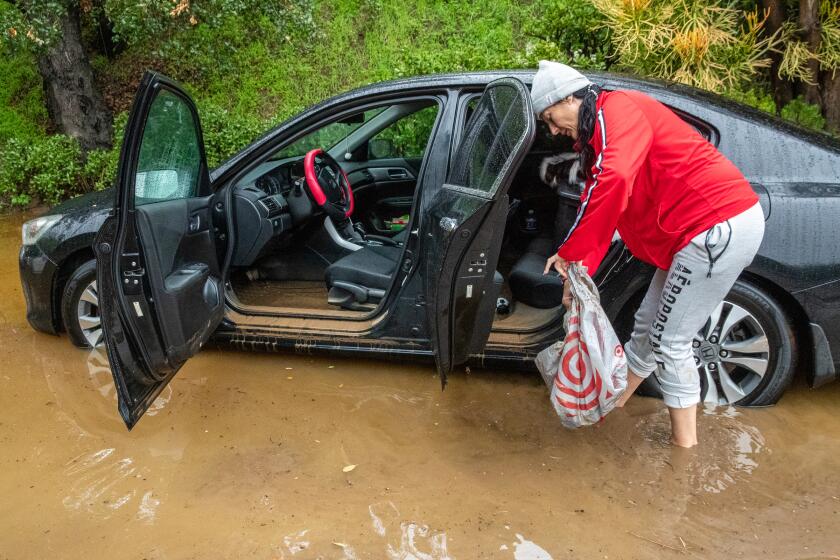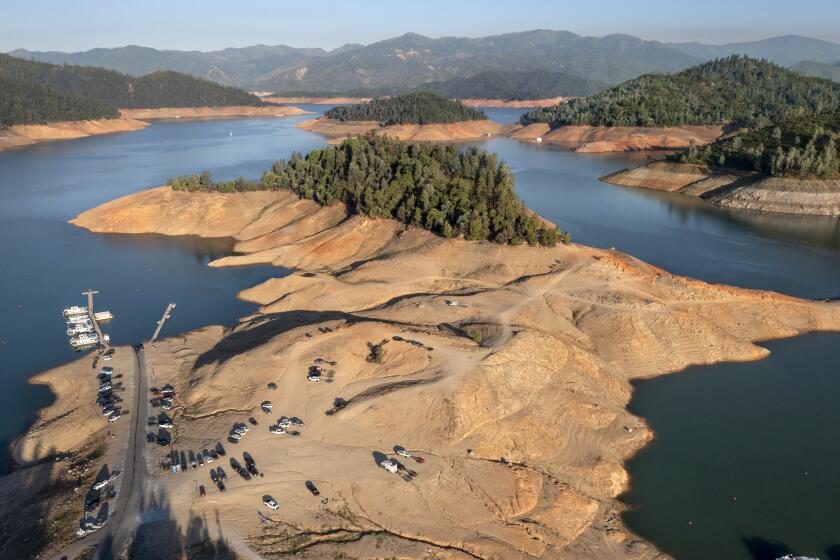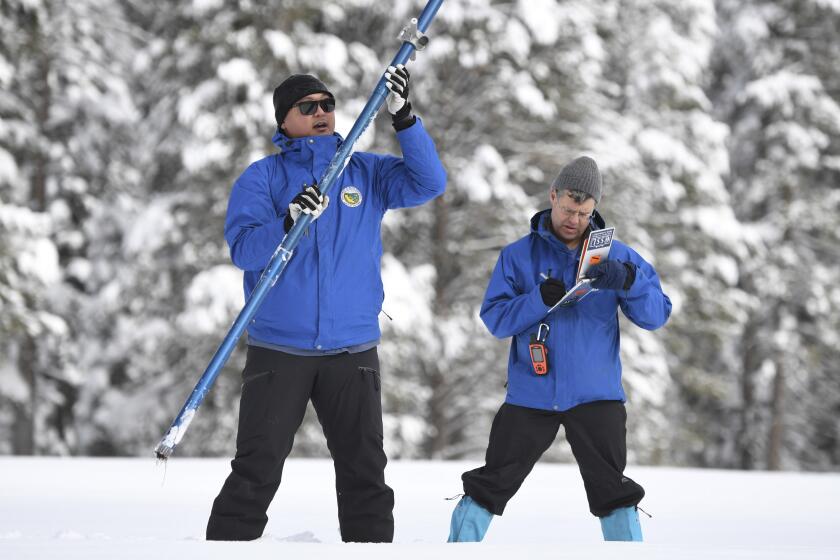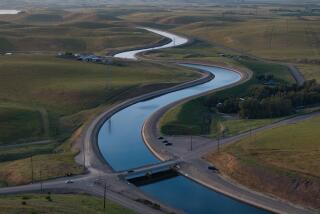California to get major boost in water supplies after January storms
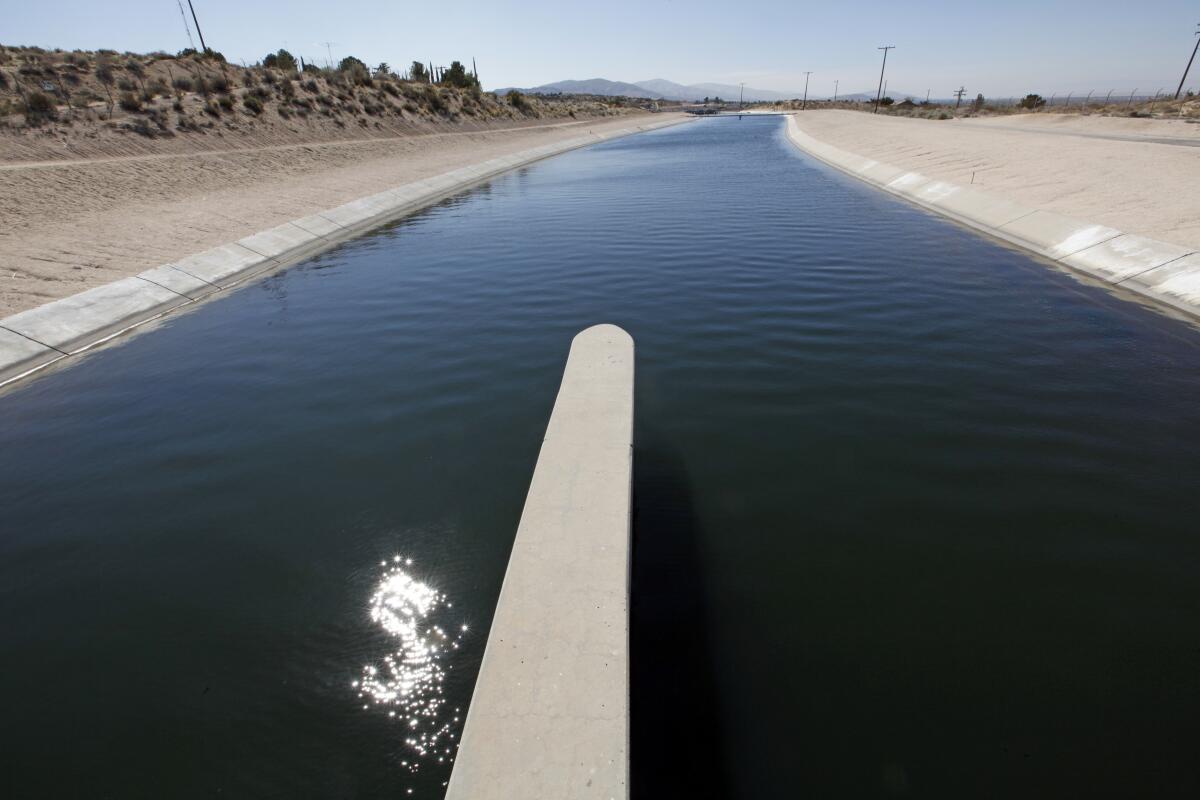
California water agencies that serve 27 million people will see an increased allocation of supplies from the state after a series of winter storms boosted reservoirs and snowpack, officials announced Thursday.
Less than two months after the Department of Water Resources said it could give only 5% of requested supplies in 2023 to the 29 agencies that rely on the State Water Project, the department increased its allocation to 30%. The State Water Project is a complex system of reservoirs, canals and dams that is a major component of California’s water system.
Officials said the allocation could change as the rest of the wet season develops. But the news marks a significant turnaround for California, which has been mired in extreme drought conditions for more than three years. Last year’s final allocation was just 5%, and the state has not issued an allocation of 30% or higher since 2019.
“We are pleased that we can increase the allocation now and provide more water to local water agencies,” DWR Director Karla Nemeth said in a statement. “These storms made clear the importance of our efforts to modernize our existing water infrastructure for an era of intensified drought and flood. Given these dramatic swings, these storm flows are badly needed to refill groundwater basins and support recycled water plants.”
For decades, El Niño seemed synonymous with wet winters for Southern California, while La Niña was a heralder of drought. But the would-be model didn’t hold up this winter.
The storms came as something of a surprise after officials warned residents to brace for another dry winter driven by La Niña, a climate pattern in the tropical Pacific often associated with arid conditions in California.
Instead, a series of nine powerful atmospheric rivers deluged the state, causing floods and landslides but also increasing reservoir and snowpack levels. As of Thursday, the statewide snowpack was 216% of normal for the date.
The state’s largest reservoirs also saw some drought recovery, with Lake Shasta at 55% of capacity on Thursday and Lake Oroville at 63% — up from 32% and 30%, respectively, just one month ago, state data show.
The reservoirs gained a combined 1.62 million acre-feet of water in storage as a direct result of the winter storms, or roughly enough to provide water to 5.6 million households for a year, according to the DWR.
The increased allocation will come as a relief to many agencies, including the massive Metropolitan Water District of Southern California, which supplies the Los Angeles Department of Water and Power and 25 other agencies in the region. The MWD in December declared a drought emergency and warned that its entire service area could see mandatory cuts if conditions did not improve.
“Depleted state reservoirs are starting to recover from record lows, and this increased allocation will certainly help communities hit hardest by this drought recover as well,” MWD General Manager Adel Hagekhalil said in a statement Thursday.
“But make no mistake, while the recent storms will help alleviate the acute emergency in areas dependent on supplies from the State Water Project, Southern California’s water challenges are far from over,” he said. “We continue to draw down our largest local reservoir, Diamond Valley Lake, to meet demands.”
Deep splotches of dark red and purple signifying the worst levels of drought have been erased from California’s map, thanks to a series of powerful storms.
Indeed, officials warned that there are two more months in California’s wet season, and dry conditions could develop once again. The latest seasonal outlook from the National Weather Service’s Climate Prediction Center shows equal chances of wetness or dryness in most of California through April. The outlook for Southern California leans toward dryness.
Surface water conditions also aren’t the only metric that feeds into California’s drought. Groundwater — or the state’s system of underground aquifers — needs more than a handful of storms to recharge, especially after years of persistent overpumping.
What’s more, Southern California’s other major water source, the Colorado River, didn’t benefit from the atmospheric river storms. The river is a water lifeline for 40 million people in the West, but climate change and overuse have pushed it to a breaking point.
“Southern California may see significant reductions in that supply beginning next year,” Hagekhalil said, referring to the Colorado River.
A battery of January storms has blanketed the Sierra Nevada in extraordinary snowpack, but will it last through the winter?
While it’s been more than three years since the state has issued an allocation of 30% or more, the number is still only about half of the average allocation, said Ted Craddock, a deputy director at the DWR. It’s been nearly two decades since the department issued a 100% allocation in April 2006.
Nemeth said that’s partly because the state’s hydrology is shifting and because aridification driven by climate change is depleting more of California’s water.
“With warming temperatures, more of our precipitation is going to evaporate into warmer air and seep into drier ground,” she told reporters.
But it’s also a case for improving the state’s aging water storage and capture infrastructure through projects such as the Sites Reservoir and the proposed Delta Conveyance System, Nemeth said. The conveyance system — a controversial tunnel beneath the Sacramento-San Joaquin River Delta — would have helped capture an additional 202,000 acre-feet of water during the recent storms, she said.
Water managers will monitor how the rest of the wet season develops to determine whether further actions may be needed later in winter, the DWR said. That includes additional snow surveys and observation flights over the Sierra Nevada, which will provide better measurements of the water content of the snow and could lead to an even greater allocation.
Yet it remains too soon to consider lifting the statewide drought emergency issued by Gov. Gavin Newsom in 2021, which will “stay in place until we get a better picture of whether or not this year turns out to be a very wet year or simply an average year,” Nemeth said.
There’s no denying the storms made a difference, however. The latest update from the U.S. Drought Monitor shows that all of California has moved out of its two worst categories — exceptional and extreme drought. Just three months ago, 43% of the state was under those classifications.
More to Read
Sign up for Essential California
The most important California stories and recommendations in your inbox every morning.
You may occasionally receive promotional content from the Los Angeles Times.
